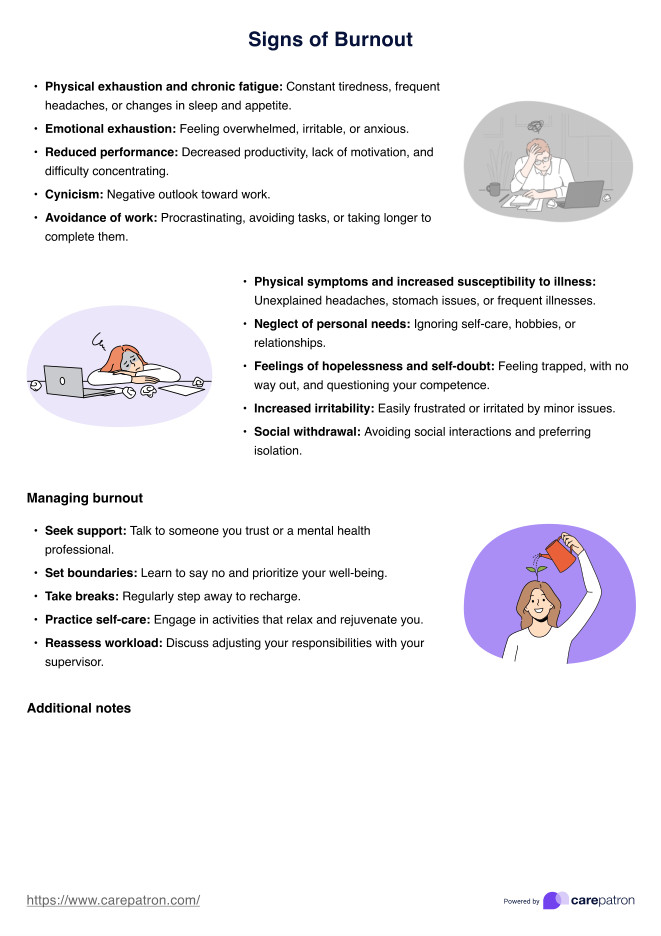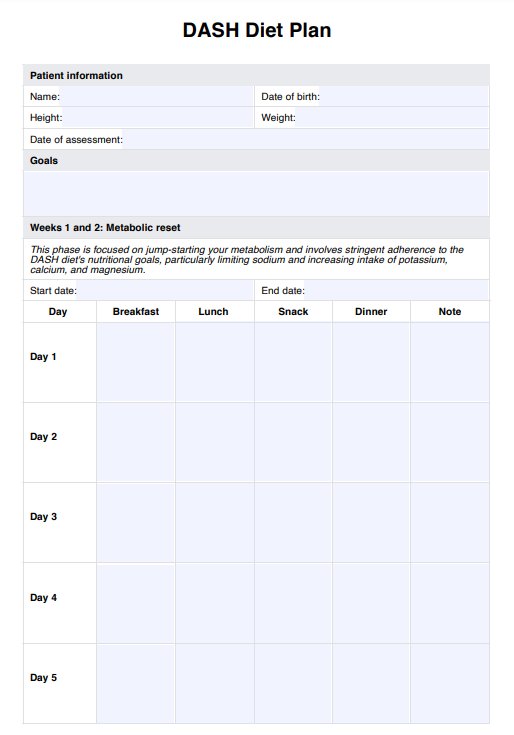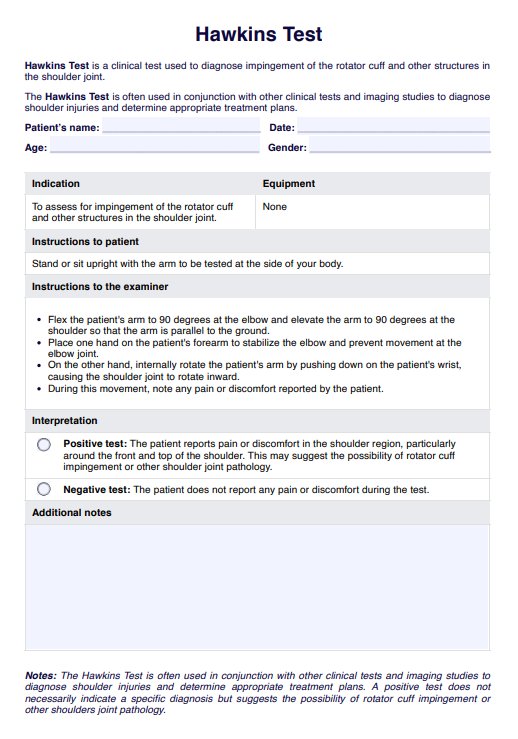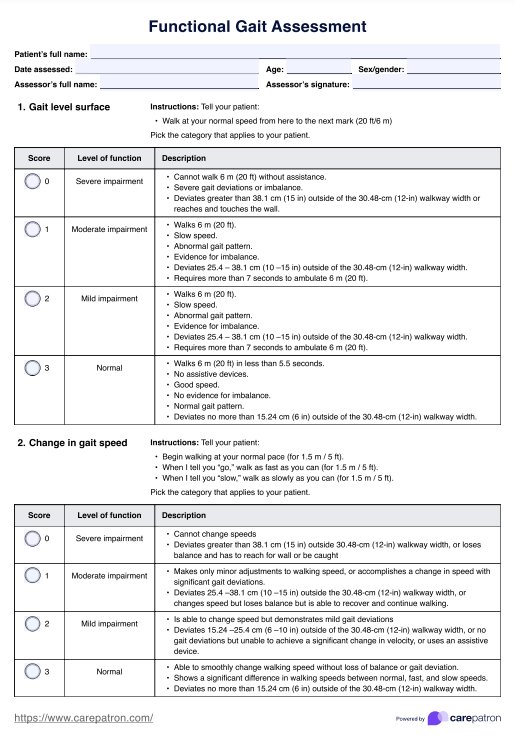Hip Flexor Strain Test
Access our Hip Flexor Strain Test template, a detailed guide for healthcare professionals assessing hip flexor strains with physical examination techniques.


What are hip flexor muscle strains?
The hip flexor muscles are a group of muscles located in the front of the hip and thigh. Their primary function is to facilitate the flexion of the hip joint, allowing for movements such as lifting the knee towards the chest or bending forward at the waist. A strain (or 'pulled' muscle) is a common injury in which muscle fibers are torn, resulting in discomfort and limited mobility.
The main hip flexor muscles include the iliopsoas (composed of the iliacus and psoas major muscles), the rectus femoris (part of the quadriceps muscle group), and the sartorius. These muscles are crucial for walking, running, climbing stairs, and maintaining posture and stability in the pelvis and lower back.
Symptoms of hip flexor strains
Hip flexor strains can vary in severity, with symptoms ranging from mild discomfort to severe pain and immobility. Common symptoms include:
- Sharp pain in the front of the hip or groin area, especially when lifting the knee towards the chest or during activities such as running or jumping.
- Swelling or bruising in the affected area.
- Tenderness to the touch along the hip flexor muscles.
- Muscle spasms in the hip or thigh.
- Reduced range of motion in the hip joint.
- Weakness in the hip flexor muscles, making it difficult to lift the leg or perform certain movements.
- A feeling of tightness or stiffness in the hip area.
Hip flexor tears or strains causes
Hip flexor strains or tears are often caused by a combination of factors, including:
- Overuse: Repetitive movements, such as running or kicking, can put excessive strain on the hip flexor muscles, leading to tears or strains.
- Sudden movements: Quick, explosive movements, such as sprinting or changing direction rapidly, can cause the hip flexor muscles to over-stretch or tear.
- Lack of flexibility: Tight hip flexor muscles are more susceptible to injury, as they may not be able to handle the stress of certain activities.
- Muscle weakness: Weak hip flexor muscles may not be able to support the demands of certain movements, increasing the risk of injury.
- Poor posture or biomechanics: Imbalances in the body, such as an anterior pelvic tilt or leg length discrepancy, can place additional stress on the hip flexor muscles.
- Trauma: A direct blow to the hip or a fall can cause a tear or strain in the hip flexor muscles.
Hip Flexor Strain Test Template
Hip Flexor Strain Test Example
What is a Hip Flexor Strain Test?
A Hip Flexor Strain Test is a comprehensive assessment used by health professionals to diagnose strain or injury in the hip flexor muscles. Physical examination (and sometimes imaging tests) are used to evaluate the condition of the hip flexors and identify the presence and severity of a strain.
Here's how the test is typically conducted:
- Inspection: The hip and thigh area is visually inspected for signs of swelling, bruising, or asymmetry, which may indicate a strain or injury.
- Palpation: The health professional will gently palpate along the hip flexor muscles, particularly the iliopsoas and rectus femoris, to identify areas of tenderness or pain.
- Resisted hip flexion: The patient is asked to flex the hip against resistance to assess the strength and pain response of the hip flexor muscles. This is known as the hip flexion manual muscle test.
- Optional - Thomas test: This test can be performed to assess the flexibility of the hip flexors. The patient lies on their back and pulls one knee to the chest while the other leg is extended.
- Optional - Stinchfield test: This test is used to differentiate intra and extra articular hip pathologies.
- X-ray: An X-ray may be performed to rule out any bone abnormalities or fractures.
- MRI or ultrasound: Magnetic resonance imaging (MRI) can provide detailed images of the soft tissues, including the hip flexor muscles, and help identify the extent of the strain or any associated injuries.
How to use the Hip Flexor Strain Test template
This Hip Flexor Strain Test template is designed to guide healthcare professionals through conducting and recording physical examinations of hip flexor pathology, ensuring all the necessary information is documented accurately. Here's how it works:
Step 1: Access the template
Click the "Use template" button on this page. This link will open the template in the Carepatron app, where it can be tailored to specific needs. Alternatively, click the "Download" button to access a ready-to-go PDF version.
Step 2: Input patient information
Fill in the fields for relevant patient data, including their demographic information and relevant medical history. There are also sections for healthcare professional information.
Step 3: Complete the physical examination
Follow the instructions on the template to perform the physical exam. Note down all observations in the space provided.
Step 4: Assess injury severity
Grade the injury depending on its severity. For more severe strains, it may be necessary to order ultrasound or MRI scanning to determine the extent of the injury and whether any tendons or ligaments have also been damaged. if applicable, record findings from these scans on the template.
Results and interpretation of the Hip Flexor Strain Test
The presence of a hip flexor injury is determined based on the findings from the physical exam and imaging tests. A diagnosis of hip flexor strain is made when there is evidence of muscle damage, tenderness, or reduced function. The severity of the strain is graded based on the extent of muscle fiber damage:
- Grade 1: Only a few muscle fibers are damaged from a minor hip flexor tear.
- Grade 2: Potential for a loss of function to the hip flexor due to a moderate amount of damaged muscle fibers.
- Grade 3: The muscle fibers are completely torn.
A positive resisted hip flexion test occurs when any weakness or pain is detected. This is indicative of hip flexor strain or tendonitis.
A positive Stinchfield test indicates intra-articular hip pressure and is obtained when pain is reported in the anterior thigh or groin. Because it cannot distinguish between hip pathologies, it is not a diagnostic test for hip flexor strains, but rather is used to rule out pain arising from the sacroiliac joint or lumbar spine (where pain is reported in the buttock or lumbar spine).
During the Thomas test, if the extended leg cannot remain flat on the table, it is a positive result. This suggests tightness in the hip flexors. A positive Thomas test may indicate that an impaired range of motion in the hip flexors is the underlying cause of the hip flexor strain.
Benefits of the Hip Flexor Strain Test template
This template is designed to support healthcare professionals in conducting comprehensive hip flexor strain examinations, facilitating accurate diagnosis and treatment. Here are some of the key benefits of using this template:
Accurate diagnosis and documentation
This template aids the diagnostic process by allowing practitioners to collect and organize all the relevant information for comprehensive evaluation. This promotes accurate and detailed record-keeping and early detection of hip flexor strains, allowing for prompt and accurate interventions.
Ease of use
This template boasts straightforward, easy-to-follow instructions and formatting, promoting correct application of physical examination techniques. This also facilitates logical ordering of the examination, allowing for a thorough yet streamlined diagnostic process.
Supports targeted treatment plans
By utilizing this template, healthcare providers can create a detailed assessment and report of the injury, allowing for tailored rehabilitation strategies and other interventions based on the severity and specific characteristics of the strain. Having a complete record of all observations simplifies the referral process.
Commonly asked questions
Experiencing sharp pain in the front of the hip or groin (especially when lifting the knee towards the chest or during activities like running or jumping) may indicate straining or tearing of the hip flexors.
A hip flexor injury can be tested through a physical examination by a healthcare professional, which palpates for tenderness, and assesses strength and pain during hip flexion. Imaging tests like X-rays or MRI may be used for a more detailed assessment.
Hip flexor pain can be mistaken for conditions such as groin strains, inguinal hernia, femoroacetabular impingement (FAI), or even lower back issues, as they can cause similar symptoms in the hip region.


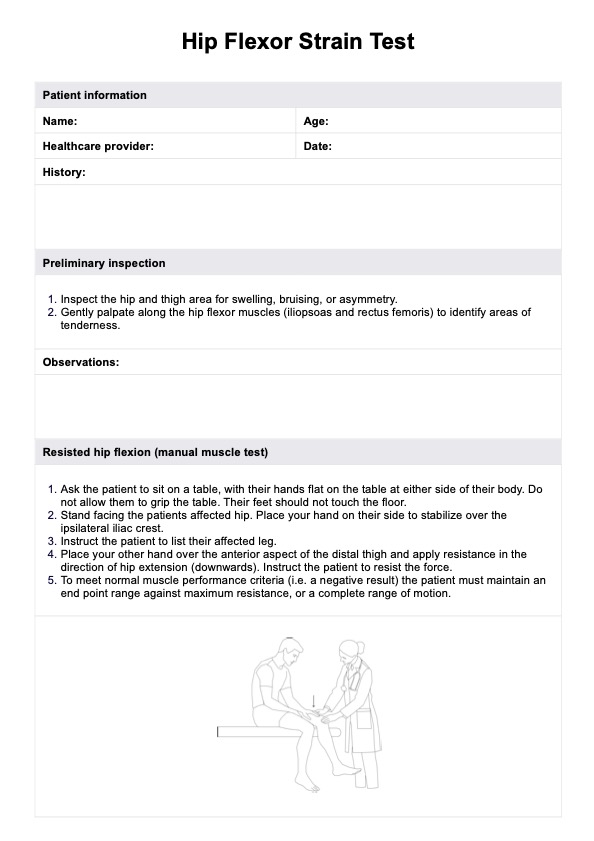
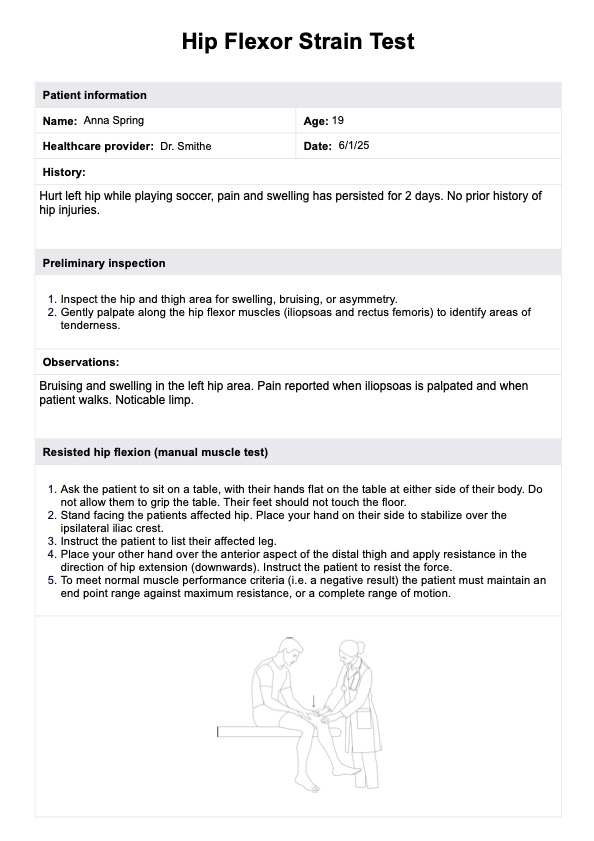














-template.jpg)















































































